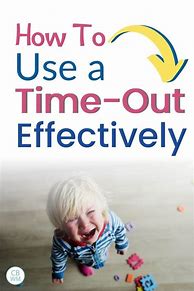How To Use Time-Out As A Positive Discipline Tool For Toddlers
Parenting toddlers can be a challenging but rewarding experience. As your little one grows, they are learning about the world around them and developing their own unique personalities. This can lead to some testing behaviors, and it’s important to establish clear boundaries and discipline strategies to help them learn and grow. Time-out is often seen as a go-to discipline technique, but it’s crucial to understand how to use it effectively as a positive discipline tool.
Understanding Time-Out: Not Punishment, But a Learning Opportunity
Time-out isn’t about punishment; it’s about providing a safe space for your toddler to calm down, reflect on their behavior, and learn to make better choices. It’s a chance for them to learn self-regulation skills that will serve them well throughout their lives. Time-out is a brief, structured break from a situation that allows your toddler to take a moment to compose themselves.
Setting Up A Safe And Effective Time-Out Space
Creating a designated time-out area is essential for a successful time-out experience. This should be a calm, quiet, and boring space that is free of distractions. It could be a small chair in a corner, a designated area on the floor, or even a time-out stool.
Here are some tips for setting up an effective time-out space:
- Keep it simple: The time-out area should be a plain, boring space without any toys or distractions.
- Make it safe: Ensure that the time-out space is safe and secure, with no sharp objects or potential hazards.
- Avoid isolation: Don’t use a room that can be isolating or scary for your toddler.
When To Use Time-Out: Recognizing Appropriate Behaviors
Time-out should be used for specific behaviors that require a break. It’s important to be consistent and use it for similar misbehaviors. Here are some examples of behaviors that might warrant a time-out:
- Hitting, kicking, biting, or scratching
- Throwing objects
- Tantrums that are out of control
- Ignoring requests and directions
However, it’s essential to avoid using time-out for behaviors that are related to developmental needs, such as:
- Normal curiosity and exploration
- Testing boundaries
- Frustration with developmental milestones
The Importance Of Consistency And Calmness
Consistency is key when implementing time-out. Make sure that you use it every time your toddler displays the designated inappropriate behavior. This will help your toddler learn that their actions have consequences and that time-out is a predictable outcome.
Maintaining a calm demeanor is crucial during a time-out. Getting angry or frustrated will only escalate the situation. Instead, speak calmly and clearly when explaining the time-out, and avoid using threats or punishments.
Navigating The Time-Out Process: Step-by-Step Guide
Here’s how to effectively implement time-out:
1. Catch your toddler in the act: When your toddler is engaging in the inappropriate behavior, calmly and firmly say, “That’s not okay. We don’t [insert inappropriate behavior].”
2. Lead your toddler to the time-out area: Calmly and firmly lead your toddler to the designated time-out space.
3. Explain the time-out: Once your toddler is in the time-out area, explain what they did wrong and why they are being sent to time-out. Use simple and age-appropriate language.
4. Set a timer: For toddlers, a time-out should be short, usually between one and three minutes. Set a timer, and let your toddler know how long they will need to stay in time-out.
5. Stay calm and consistent: Avoid engaging with your toddler during the time-out, and don’t give in to their attempts to get your attention.
6. End the time-out: When the timer goes off, calmly end the time-out. Avoid making a big deal of it.
7. Re-engage with your toddler: Once the time-out is over, calmly engage with your toddler and talk about what happened.
How To Engage Toddlers After Time-Out
After the time-out, it’s crucial to help your toddler understand what they did wrong and what they can do differently next time. Don’t punish them further; instead, focus on positive reinforcement. Here are some tips for engaging with your toddler after a time-out:
- Acknowledge their feelings: “It sounds like you were really upset because [insert situation]. We all get upset sometimes. “
- Help them identify their feelings: “You were feeling frustrated and angry, but hitting your brother isn’t okay. What can we do instead?”
- Give them a chance to make amends: Help them understand how to repair any damage caused by their behavior.
- Redirect them to positive behavior: Offer alternative ways to express their feelings, such as drawing, playing with toys, or talking to you about what’s bothering them.
Alternatives To Time-Out: When Time-Out May Not Be Effective
Time-out isn’t the only discipline strategy. There are times when other methods might be more effective, such as:
- Distraction: If your toddler is about to engage in an inappropriate behavior, divert their attention to a more acceptable activity.
- Natural consequences: Allow natural consequences to teach your toddler about their actions. For example, if they don’t put their toys away, they might not be able to find them later.
- Positive reinforcement: Reward and praise good behavior to encourage repeat behavior.
- Ignoring unwanted behavior: For some behaviors, such as whining or tantrums, ignoring the behavior can be effective.
Turning Time-Out Into A Positive Learning Experience
Time-out can be a positive learning experience for your toddler if it’s implemented correctly. By providing a calm, consistent, and supportive approach, you can help your toddler learn from their mistakes and develop self-regulation skills.
Here are some tips for making time-out a positive learning experience:
- Use age-appropriate language: Explain the time-out in a way that your toddler can understand.
- Keep it short and sweet: Time-outs for toddlers should be brief and focused.
- Focus on the positive: Always reinforce positive behavior.
The Role Of Time-Out In Building Self-Regulation Skills
Time-out helps toddlers develop essential self-regulation skills. It teaches them to:
- Identify their emotions: They learn to recognize their feelings and understand how they are feeling.
- Control their impulses: They learn to manage their emotions and make better choices.
- Take a break when they need it: They learn how to remove themselves from situations that are too overwhelming.
Conclusion
Using time-out as a positive discipline tool for toddlers can be an effective way to teach self-regulation and appropriate behavior. By implementing time-out in a calm, consistent, and supportive manner, parents can help toddlers learn from their mistakes and develop positive coping mechanisms. Remember, the goal isn’t to punish, but to provide a safe space for toddlers to calm down, reflect on their actions, and learn how to make better choices in the future.
FAQs
Q: How long should a time-out last?
A: For toddlers, a time-out should be short, usually between one and three minutes. It’s important to be consistent with the duration of the time-out.
Q: What if my toddler refuses to go to time-out?
A: If your toddler refuses to go to time-out, calmly lead them to the time-out space and stay with them until they settle down. Avoid engaging with them or giving in to their resistance.
Q: Is time-out appropriate for all toddlers?
A: Time-out can be an effective discipline tool for most toddlers. However, if your toddler has specific developmental or emotional challenges, it’s important to consult with a healthcare professional or child development expert for personalized guidance.
Q: What are some other positive discipline strategies that I can use besides time-out?
A: There are many other effective positive discipline strategies, including natural consequences, redirection, positive reinforcement, and ignoring unwanted behavior. It’s important to find what works best for your family and your toddler’s individual needs.

